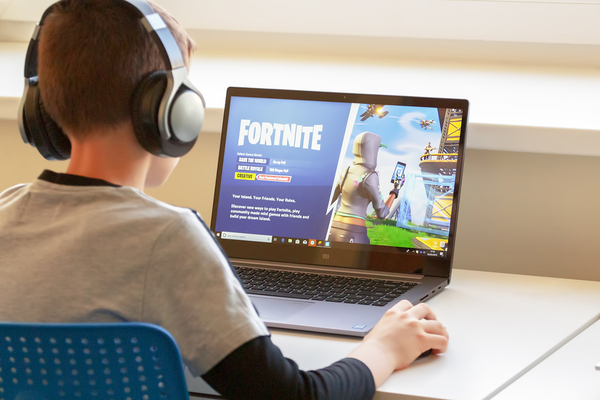Parents know that they need to be cautious about their children’s internet usage. The internet is changing all the time, so it can be tough to keep up, but for the most part, parents know that they need to monitor how their children interact on social media sites like Facebook and Twitter, what types of things they share on message boards, and what kinds of apps they download to their phones and other mobile devices.
But what many parents don’t know is that they also need to be wary of how and with whom their children are interacting on kids’ online games like Minecraft or Fortnite.
The Dangers of Online Gaming
Parental concern over video gaming is nothing new, of course. But historically, parents have worried less about who their kids are playing with and more about the content of the games. You may have been concerned about your child playing games that are too violent or too graphic, or more broadly, you may have been concerned about your child spending more time on gaming than is healthy for them and neglecting things like homework, chores, and outdoor activities.
But the truth is, what you may need to be more concerned about is who your teens are coming into contact with on online games. Although some games are geared toward and more popular with young gamers than adult gamers, these kid-centric games are also popular targets for online predators who find them to be easy ways to connect with young children and teens.
Often, predators who target children using video games pose as children themselves, at least in the beginning. This allows them to gain the trust of children who might be savvy enough to avoid interacting too much with people who are obvious adults.
Often, the goal of these predators is to get children to share explicit or sexually suggestive images of themselves. Once they get one such photo, they can use it to blackmail the child into sending more images, often by threatening to send the original image to the child’s family members or friends.
If a child drops enough information for the predator to glean their location, a predator may threaten the child in other ways, like promising to show up in person and hurt the child or their family members if the child does not comply.
Online Child Abuse on the Rise
Investigators are seeing more and more of these types of cases. A federally designated clearinghouse in Washington that tracks online child sexual abuse received over 1500 reports of such child abuse cases last year – up from only 50 similar reports six years ago.
There are many factors that contribute to the increase in reports of online child abuse. Children are being given access to the internet at younger and younger ages. Parents who may not believe their child is ready for a smartphone that they can take with them anywhere may not be as fearful of letting their child play an online game at home, and even when they require children play in common areas of the house, they may miss early signs that their child is being approached and groomed by a predator in disguise in a gaming situation.
Furthermore, tech companies have made relatively little effort to put safeguards in place that would protect children from such interactions. And gaming platforms make rich targets for predators. More than 95% of teenage boys and over 80% of teenage girls play some online games. High schoolers can earn varsity letters and college scholarships for gaming in some cases.
In other words, there are plenty of incentives beyond simple enjoyment for kids to participate in online gaming and little to prepare them for the types of situations that they might encounter when they start interacting with strangers through the gaming platforms.
What Parents Can Do

Parents may be tempted to protect their children by simply keeping them away from online video games. But as a long-term strategy, this is often ineffective. In practice, kids will often find a way to play video games whether their parents want to or not, either by sneaking in gaming sessions on their own devices when their parents are occupied or not around or by gaming on friends’ devices in places where there is less adult supervision.
Kids who are sneaking around to play video games could be even less likely to report inappropriate interactions with adults on gaming platforms because they fear getting into trouble for gaming in the first place. And ultimately, it’s unfair to restrict kids from games intended for them because of the bad behavior of adults.
Instead, a better idea is to teach kids healthy gaming habits. Kids need to know how to recognize and report suspicious and inappropriate behavior online. They need to be encouraged to report such behavior even if they’ve already sent an explicit photo or engaged with an online predator in some other way. It’s important for kids in these situations to be aware that they’re not the ones at risk of getting into trouble in such a scenario; that they are, in fact, victims of abuse.
And of course, parents and other adults should take the risks seriously. Careful monitoring of your child’s gaming sessions can allow you to intervene before inappropriate interactions can go too far. Adults may be better able to catch telltale signs of grooming, such as trying to fill a child’s emotional needs, targeting them for special treatment or gifts, testing their boundaries, and trying to isolate them from friends or family.
Parental monitoring software can help you keep a close eye on your children’s interactions in gaming spaces so that you can better protect them from online predators. To find out more about how parental monitoring software can help you keep your child safer online, get our risk free trial.





